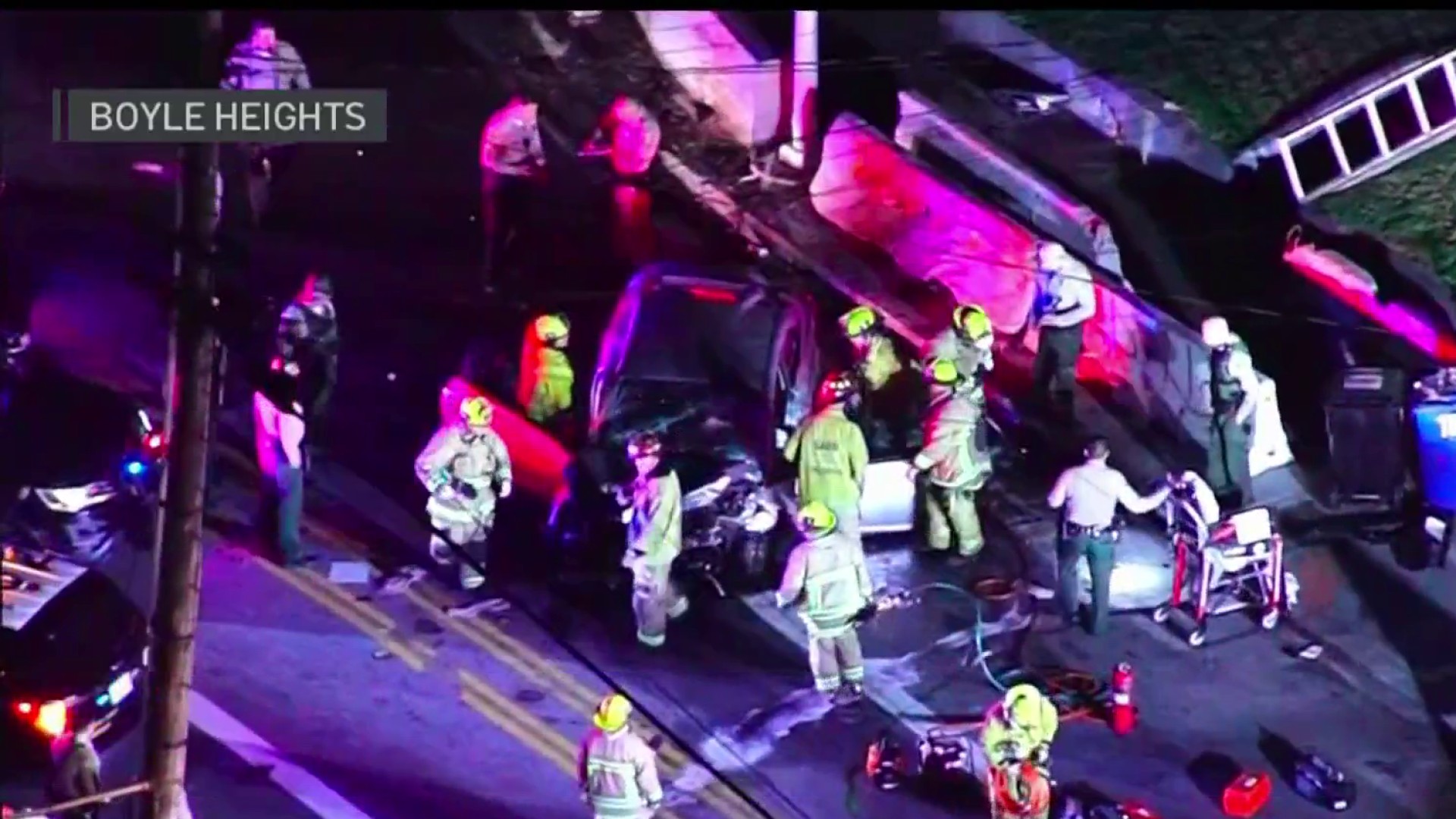What to Know
- A storm system could result in record rainfall in some spots Wednesday and Thursday.
- Riverside County officials advised residents who live along the foot of the Cleveland National Forest to be prepared for evacuations.
- A massive trough of low pressure loaded with energy from the Gulf of Alaska and a disturbance farther south in the Pacific
A storm system fueled by a river of moisture over the Pacific arrived in Southern California early Thursday, drenching the region with heavy downpours that caused flooding and forced evacuations in areas below wildfire burn scars.
A flash flood warning was issued early Thursday for parts of Riverside and Orange counties. Mandatory evacuations were ordered for the Holy Fire burn area in Riverside County and Orange County's Trabuco Creek.
In San Bernardino County, the Morongo Valley was under a flash flood warning until about 3:30 p.m.
In Los Angeles County, morning downpours slowed the morning drive. A mudslide closed part of Topanga Canyon Boulevard between PCH and Grand View Drive.
[UPDATED 3/6/2019]Photos: Winter Storms Bring Days of Rain, Snow and Wind to Southern California
It's all due to a massive trough of low pressure loaded with energy from the Gulf of Alaska and a disturbance farther south in the Pacific began spreading across the region, gathering strength as it made landfall Wednesday evening.
"As we went to midnight, that's when a switch turned on," said NBC4 forecaster Shanna Mendiola. "We've got a chance of heavier showers that will pick up throughout the morning.
An atmospheric river is a large band of moisture in the sky. Storms tap into that moisture, ushering it into California from the Pacific.
The moisture could produce as much as 10 inches of precipitation in isolated locations, mainly in and around mountains. Expect 1 to 2 inches of rain along the coast and in valley areas, and between 2 and 4 inches at the foothills and in the mountains.
This winter's rainfall is considerably more than 2018. Since Oct. 1, downtown LA had received 13.29 inches of rain compared to the previous year's 1.89 inches and the normal, which is 8.54 inches.
In Riverside County, residents who live along the foot of the Cleveland National Forest were advised to be prepared for mandatory evacuations if flooding appears imminent. The western halves of Riverside and San Bernardino counties are predicted to receive anywhere from 2 to 3 inches.
The result is a familiar scenario for residents near California's burn areas. Tim Suber said he has lost count of how many times his hillside neighborhood in Lake Elsinore has been evacuated between last summer's devastating wildfire and this winter's succession of storms.
"I'm not going this time," Suber said Wednesday after Riverside County sheriff's deputies warned him that he could end up trapped if roads flood. "I've got 35 chickens and a daughter who won't leave them behind. So we're staying."
The real estate agent said he's confident culverts and washes in the area will handle any runoff after crews removed dozens of truckloads of dirt following the last storm. But just in case, "my car is gassed up and ready to go at a moment's notice," said Suber, 54.
Coachella Valley communities and other desert areas could get up to three quarters of an inch over the duration of the storm.
Snow levels are generally expected to remain above 8,000 feet.
The Riverside County Emergency Management Department indicated that evacuation warnings, which are advisory only and urge recipients to leave for their own safety, are highly probable, and mandatory evacuation orders may follow at the first sign of flash flooding, mud and debris flows in the vicinity of burn scars within the Cleveland National Forest.
Local
Get Los Angeles's latest local news on crime, entertainment, weather, schools, COVID, cost of living and more. Here's your go-to source for today's LA news.
Details about how to prepare and where to go when an evacuation order is issued can be found here.
Residents can also sign up for emergency alert notifications via the website.
A wide area skirting the eastern boundary of the national forest, including Lake Elsinore and the Temescal Valley, was left exposed to potential flood damage because of the 23,000-acre Holy Fire in August.
The blaze, allegedly the work of an arsonist, denuded steep terrain below Santiago Peak, permitting water to flow unchecked onto lower slopes where subdivisions are situated.
During a three-part storm series between Jan. 31 and Feb. 4, the EMD issued mandatory evacuation orders covering the Glen Ivy, Horsethief Canyon and McVicker Park communities on the north side of Lake Elsinore and south of El Cerrito, along Interstate 15.
Mud and debris flows prompted several street closures, but no significant damage was reported in connection with the storms.
Fragments of another storm system will impact Southern California Friday-Sunday, during which scattered showers are in the forecast.



